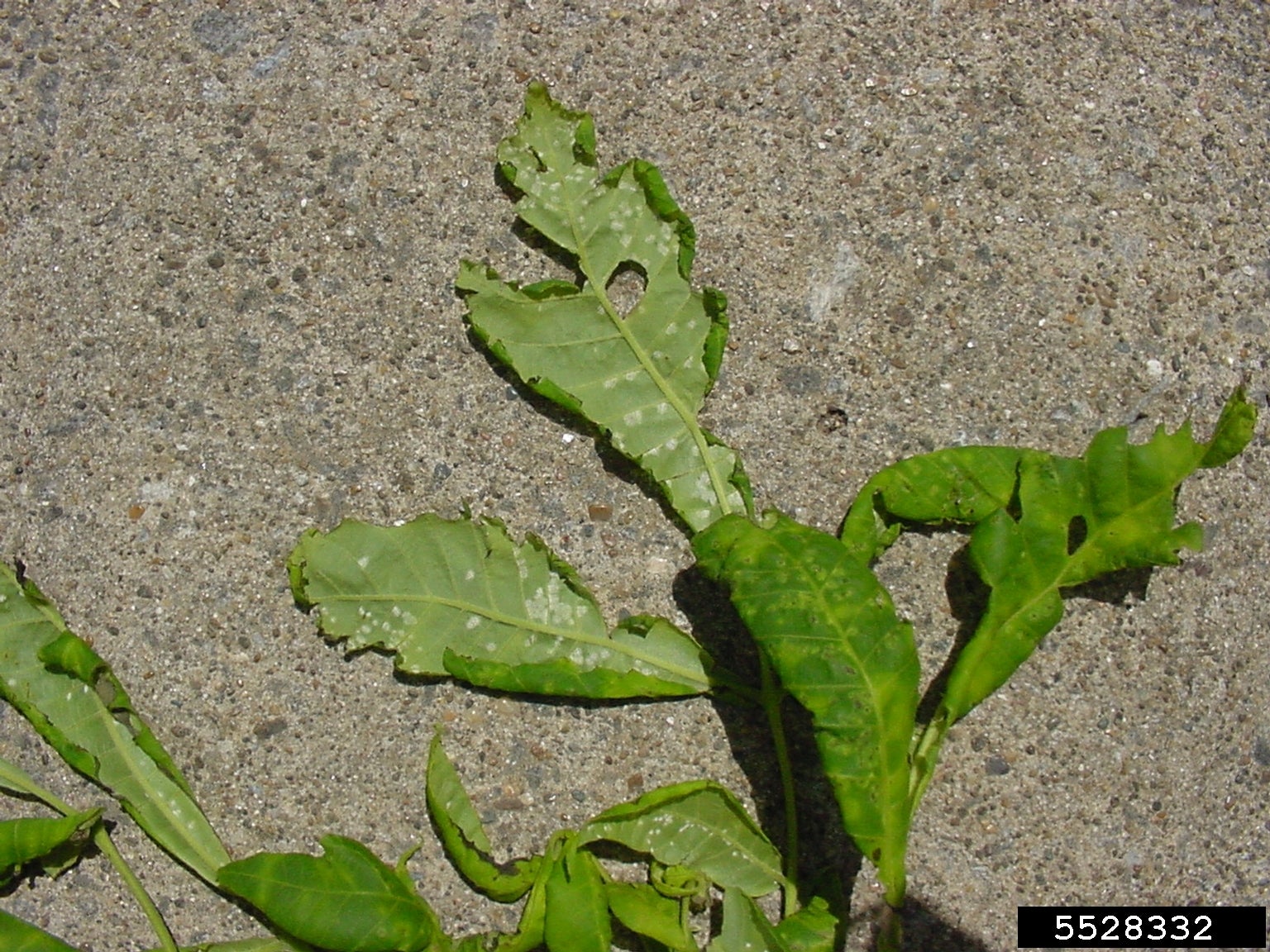White Leaf Spot Control - How To Treat White Spots On Plant Leaves


It's late spring and the leaves of your trees are almost full sized. You take a walk under the shady canopy and look up to admire the foliage and what do you see? White spots on the plant leaves. If that tree you're standing under is a nut tree, the chances are good that you're looking at a case of downy leaf spot, also known as white leaf spot. Control and elimination of this downy spot disease will probably be the next thing on your mind. You'll want to know what to do for white spots on the leaves. Will it harm your tree? First, let's take a closer look.
What is Downy Spot?
Early on, downy leaf spot presents itself as small (about 1/8 to 1/4 inch (3 to 6 mm.)), white, furry areas on the underside of the leaves, and pale green spots on the upper side. If some of those white spots on the plant leaves have fused together to become blotches, they should look like white powder. If the disease attacking your nut tree fits this description, you've got downy spot. The proper name for your leaf destroyer is Microstroma juglandis. It is a fungus that commonly attacks host trees such as butternut, hickory, pecan, and walnut trees. It's found anywhere in the world where these nuts are grown. Those white spots on the plant leaves are fungal structures and spores that thrive in the warming temperatures and rains of spring. As the downy spot progresses, the upper sides of the leaves become chorotic, that is, show yellowish spots that will eventually turn brown. Affected leaves will fall from the tree by early August. As time passes, the ends of the branches may develop witch's broom formations. The newly growing leaves will be stunted and malformed and will appear more yellowish than green. Many of the broom leaves will shrivel and die over the course of the summer, but before they do, these witch's brooms can grow to be several feet (1 m.) in diameter.
White Leaf Spot Control - How to Treat White Spots on Plant Leaves
Unfortunately, the answer to what to do for white spots on the leaves of your nut tree is nothing. Commercial growers have the advantage of proper equipment to reach the full height of these trees and to spray the entire tree with commercial fungicides not available to the home owner with only one or two trees. The good news is that the life of your tree won't be threatened by white leaf spot. Control of future infections is largely a matter of good sanitation practices. All leaves, infected or healthy, and all shucks and nuts should be cleared and destroyed each winter or in the early spring before buds begin to swell. Infected leaves and nuts that are left to overwinter on the ground are major sources for new infections in the spring. Removing damaged twigs and limbs, including the unattractive witch's broom, should also be practiced during the dormant season, if possible. While downy leaf spot won't kill your tree, any infection will weaken it and leave it vulnerable to more serious infections. Keep your trees well fertilized and watered, and they'll stay strong enough to easily survive this fungal disease.
Gardening tips, videos, info and more delivered right to your inbox!
Sign up for the Gardening Know How newsletter today and receive a free copy of our e-book "How to Grow Delicious Tomatoes".

Jackie Rhoades began writing for Gardening Know How in 2010.
-
 Looking For Plants To Give You The Soft And Fuzzies? Try These 5 Fuzzy Leaf Plant Options
Looking For Plants To Give You The Soft And Fuzzies? Try These 5 Fuzzy Leaf Plant OptionsLovers of texture, drama, silver foliage and tactile plants will adore these special sensory garden additions. These fuzzy leaf plant options will leave you all aglow
By Susan Albert
-
 Get Ready For A Summer Of Hummers! Grow These Full Sun Hummingbird Plants and Flowers
Get Ready For A Summer Of Hummers! Grow These Full Sun Hummingbird Plants and FlowersIf you’re lucky enough to enjoy a sunny backyard, make sure you are maxing out on your pollinator opportunities and grow these full sun hummingbird plants and flowers
By Tonya Barnett